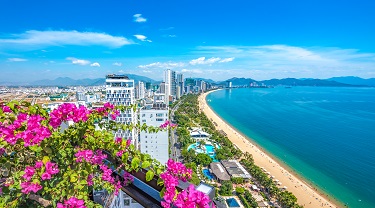Having one of the world’s highest food self-sufficiency ratios, this dynamic presents opportunities for Canadian companies all along the agri-food value chain—from producers of fertilizers and agricultural commodities to providers of expertise and ag-tech, suppliers of prepared food products and even those in food retailing and distribution.
What about cars? We know a thing or two about making cars in Canada. Beyond China, which is now the world’s largest auto market, there are strong long-term growth prospects for countries, like Indonesia, the Philippines and Vietnam, as rising disposable income and urbanization create demand for car ownership. When viewed through the lens of technological innovation, shifting consumer preferences and regulatory trends, we’re also seeing a move toward electric vehicle (EV) technologies, and the strengthening of local EV supply chains in countries such as India.
Rapid urbanization will require roads, railways, ports and airports to expand commerce. People will need housing, improved water supplies and sanitation, education and health-care facilities to increase productivity. They’ll need mass transit systems and better solid waste management to improve living standards. Here, too, there’ll be strong demand for clean and renewable technologies, and opportunities in digital infrastructure as well.
The bottom line?
While it’s easy to be distracted by the day-to-day gyrations of the market, and the flurry of news around the global economy, we need to keep our eyes on the immutable structural trends that will shape the world that Canadian companies will be competing in over the long term. In setting a truly transformative strategy, looking in the rearview will tell us nothing. We need to think more about what trends around demographics, wealth accumulation, urbanization, technological disruption, and the availability of land, labour and capital tell us about where we need to be playing and how we can set up Canada to be competitive, as if our future depends on it. Because it does.
This week, special thanks to Lili Mei and Nadeem Rizwan in our Economic and Political Intelligence Centre.
As always, at EDC Economics, we value your feedback. If you have ideas for topics that you would like us to explore, please email us at economics@edc.ca and we’ll do our best to cover them.







